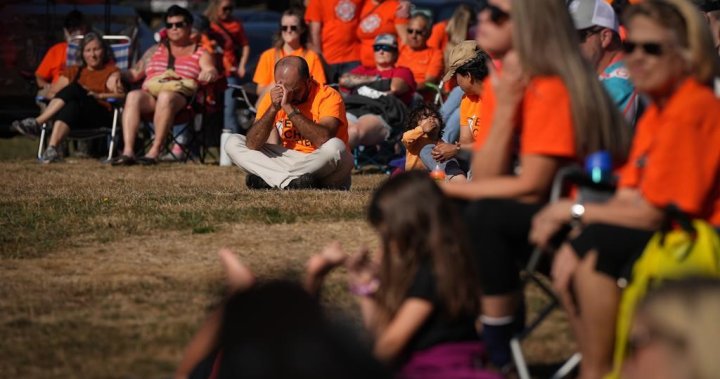
Measuring Reconciliation: U of M, others create ‘barometer’ to assess progress
Global News
How do you measure reconciliation? Three Canadian post-secondary institutions have created a tool to do just that.
How do you measure reconciliation?
Three Canadian post-secondary institutions have created a tool to do just that.
The Canadian Reconciliation Barometer is the product of a research team with members from the University of Manitoba, the University of Victoria, Toronto Metropolitan University, Probe Research Inc. and the National Centre for Truth and Reconciliation. The project aims to measure progress on 13 indicators by surveying Indigenous and non-Indigenous Canadians.
On Wednesday, the team released its second year of results. Researchers can now see how attitudes and awareness have evolved over the 2021-2022 period.
“We have seen some modest progress in a couple of different areas,” said Aleah Fontaine, Ph.D. candidate at the University of Manitoba and the head statistical analyst for the Reconciliation Barometer.
“We found that compared to the last time we did the survey, both Indigenous and non-Indigenous peoples are becoming more aware of residential schools. They’re more confident in their understanding of history and are acknowledging just how harmful the schools were.”
2021’s data shows 87 per cent of Indigenous respondents and 65 per cent of non-Indigenous respondents had heard or read about residential schools. Those numbers jumped to 94 per cent and 90 per cent, respectively. The 2022 report notes the discoveries of unmarked graves at former residential school sites in the past year could be partly responsible for the increase in awareness.
Though there are other indicators with slight increases, it’s the only one with a significant improvement. Ry Moran, Reconciliation Barometer project member with the University of Victoria, says though awareness has increased, action on reconciliation is lagging behind.

 Run 3 Space | Play Space Running Game
Run 3 Space | Play Space Running Game
 Traffic Jam 3D | Online Racing Game
Traffic Jam 3D | Online Racing Game
 Duck Hunt | Play Old Classic Game
Duck Hunt | Play Old Classic Game